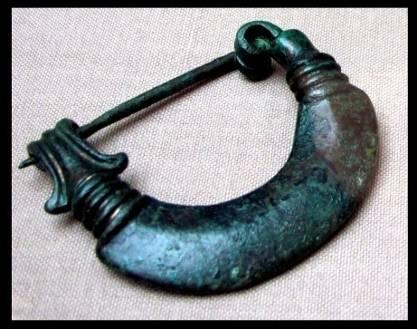The Invention of the Safety Pin: Fibulas and Phrygians

In ancient times, clothing had a purpose beyond just keeping warm. Clothing was used as a way to express social status, identity, and aesthetic sense. One of the most important parts of this process is the fibulae, which are considered the ancestors of today's safety pins. Fibulae are clothing accessories invented and widely used by the Phrygians in the heart of Anatolia. These ancient metal objects have played both a functional and symbolic role as part of clothing culture throughout history.
The story of the fibula dates back to B.C. It began in parts of Europe, perhaps Greece, in the 13th centuries. It spread rapidly and reached settlements on the Western Aegean and Mediterranean coasts. Different cultures have reinterpreted this new accessory with unique designs that reflect their own cultural identities. Fibulae became objects that not only held items of clothing together, but also a kind of "identity card" that reflected the wearer's identity and social status.
However, the real star of the fibula shone in Anatolia during the Phrygian period. The Phrygians had developed extraordinary talent in metalworking. They produced fibulae with arc-shaped bodies and whose ends were decorated with spherical ornaments, groove bands or relief motifs. These fibulae were usually made of bronze, although some were decorated with silver and even gold plating.
Phrygian fibulae, B.C. From the 2nd millennium BC It was the product of a culture that developed in Anatolian lands until the 1st millennium BC. This culture was a civilization that required mastery in many fields such as architecture, sculpture, pottery and high-quality metal work. Fibulae were a real contribution of the Phrygians to this rich jewelery art and spread through trade from Urartu to Near-Asian cultures, from Greece to Italy.
The 145 fibulae found during the excavations of the Great Tumulus in Gordion were one of the rare examples reflecting the richness and aesthetic understanding of this period. These fibulae can be considered not only as clothing accessories but also as jewelery that reflects the artistic talents and cultural influence of the Phrygians.
As a result, fibulae have been an indispensable part of clothing culture throughout history and have maintained their importance as accessories that are aesthetically rich and carry symbolic meanings. This Phrygian metalwork wonder helps us understand the origins of safety pins and how people used their clothing to express their identity, while also leaving an important archaeological trace reflecting the trade routes and cultural interaction of the ancient world.
